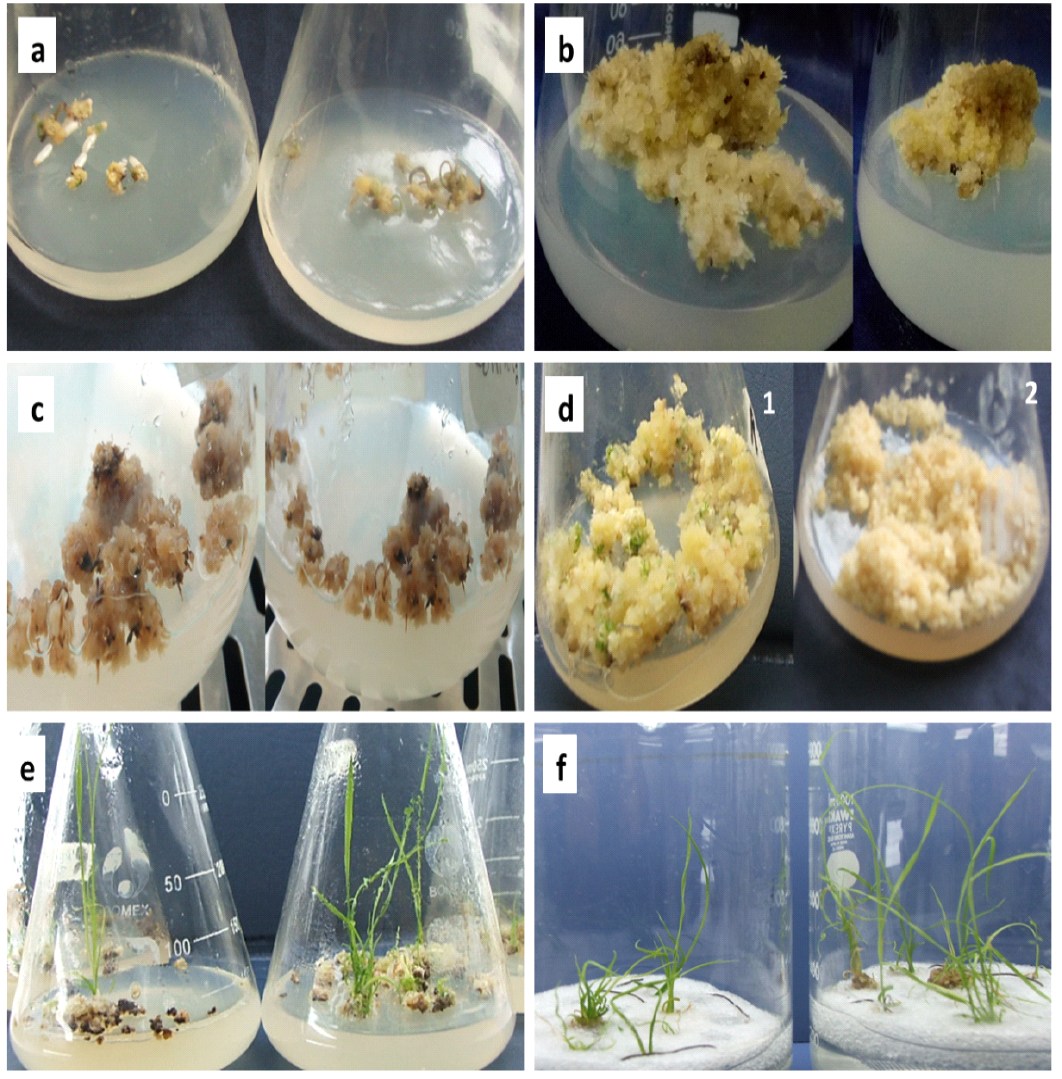Assessment of Adaptation, Regeneration Capability and Fatty Acid Profiles of LiCl Adapted and Unadapted Cell Lines of Oryza sativa L. Cv. Swat-1
Assessment of Adaptation, Regeneration Capability and Fatty Acid Profiles of LiCl Adapted and Unadapted Cell Lines of Oryza sativa L. Cv. Swat-1
Qudsia Khalid, Safdar Hussain Shah*, Faiza Zaeem and Saad Hussain Shah
Indices of tolerance of unadapted and adapted calli lines of rice (Oryza sativa.L.cv.Swat-1) under NaCl stress. RM=control line on control media and adapted line on 25 mM LiCl stressed media. The bars represent the mean values of 5 replicates +SE.
Fatty Acid profile of unadapted and adapted cell lines of rice. (a) saturated fatty acids, (b) unsaturated fatty acids. The bars represent the mean values of 5 replicates +SE.
Sequential steps in adaptation and regeneration process. a) Callus induction from rice seeds, b) unadapted calli line, c) LiCl adapted calli line, d) 1: embryogenic calli, 2: non embrugenic calli, e) regenerated plantlets and f) plantlets transferred to liquid medium.
Regeneration of unadapted line during different subcultures. a). regeneration during first culture, b) regeneration during 2nd subculture, c); regeneration during 3rd subculture.
Regeneration of adapted line during different subcultures a) regeneration during first culture b) regeneration during 2nd subculture c) regeneration during 3rd subculture.
Adapted calli on regeneration media with10 mM LiCl 10 days after first culturing.














